- About Us
- Bearings
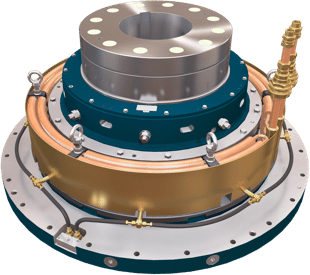 Vertical Bearings
Vertical Bearings
- AV Series
AV
LV SeriesLV
MV SeriesMV
V SeriesV
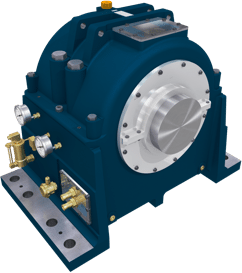 Horizontal Bearings
Horizontal Bearings
- HD Series
HD
IH SeriesIH
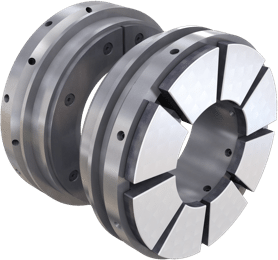 Tilting Pad Bearings
Tilting Pad Bearings
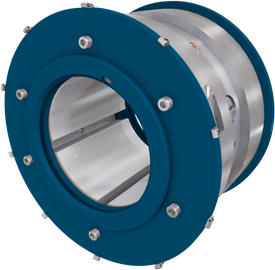 Journal Bearings
Journal Bearings
- Journal Pad Units
Journal
 Thrust Bearings
Thrust Bearings
- SE Series
SE
Omega EqualisedOmega
OmegaOmega
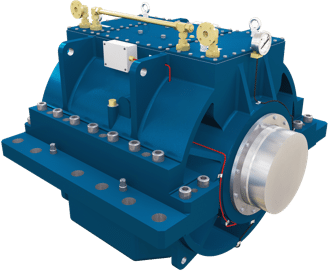 Marine Bearings
Marine Bearings
- Marine Gearbox Internals
Marine
Marine Propulsion Motor
and Generator BearingsEnter your email to download the full paper
"*" indicates required fields
Outline
Home > Measurements of Maximum Temperature in Tilting-Pad Thrust BearingsMeasurements of Maximum Temperature in Tilting-Pad Thrust Bearings
D Horner, Michell Bearings, UK, J E L Simmons, University of Durham, UK and S D Advani, Michell Bearings, UK
One of the important restrictions governing the design of tilting pad thrust bearings is the maximum allowable white metal temperature. However, adequate guidance on typical pad operating tempatures has not been available in established lubrication hand books. New pad tempature data from 12 test bearings have been combined with previously published work to provide a source of information covering a diverse range of proven bearing types and sizes.
The collected information has been presented as the difference between maximum pad and oil supply tempatures at fixed values of bearing pressure against mean sliding speed. Clear trends have been found in the data which have enabled curves of typical bearing performance to be drawn through the test results. The difference between the type of lubricant feed (“flooded” or “low loss directed”) and the pivot position (center or offset) have been highlighted.
Introduction
Tilting-pad thrust bearings are a very efficient means of transferring large thrust loads from rotating shafts to surrounding structures. Since the generation of the lubricating film is entirely automatic, and its presence eliminates wear, tilting-pad units have proved to be the most appropriate type of bearing in many areas of industry.
As with all technologies, there are a number of fundamental limitations that define a tilting-pad’s range of suitable applications. One such limit is the maximum safe working temperature of the traditional white metal face; hence, the assessment of pad temperature is an essential part of bearing performance prediction. Consequently, a statement of performance must be considered incomplete if it does not contain an estimate of pad temperature.
The successful introduction of tilling-pad technology was largely due to the good agreement between the operation of modest size pads and the predictions of simple hydrodynamic theory. With the general trend for larger bearings and more arduous duties, the prediction of pad temperature has gained importance. Although the laws of thermodynamics are well understood, there is no complementary simple thermodynamic model of bearing performance for the prediction of operating temperatures. Historically, experimental results have been the only reliable source of pad temperature information. Early formulae for predicting pad temperatures were based on bearing observations, and even today’s computer models rely heavily on test data for setting up a number of parameters used in the performance calculations; hence; the consolidation of experimental results into coherent pad temperature information is of prime importance to lubrication engineers.
For many years, various technical journals have published temperature data obtained from bearing tests, but very few anicles have drawn together the results from different bearings to see if there is a consistent overall pattern to the reported results. This paper uses previously unpublished test results from the authors’ company in combination with other published work, to form a general source of information on typical bearing temperatures.
ACCESS FULL PAPERRecommended articles
Tilting Pad Journal Bearings – Measured and Predicted Stiffness Coefficients
The Comparative Performance of Energy Efficient, Tilting Pad Thrust Bearings for High Speed Applications
Developments in PTFE Faced Thrust Bearings for use in Vertical Pump Applications
Developments in Hydro Generator Thrust Bearings
Michell Bearings
Waldridge Way,
Simonside East Industrial Park,
South Shields,
NE34 9PZ.Tel: +44 (0) 191 273 0291
Email: sales@michellbearings.com
Email: hrteam@britishengines.com
Email: recruitment@britishengines.com© Michell Bearings.
Registered Office Address: 11 Glasshouse Street, St Peter's, Newcastle upon Tyne. NE6 1BS. Company registered in England and Wales no. 9390648

 PTFE Bearings
PTFE Bearings